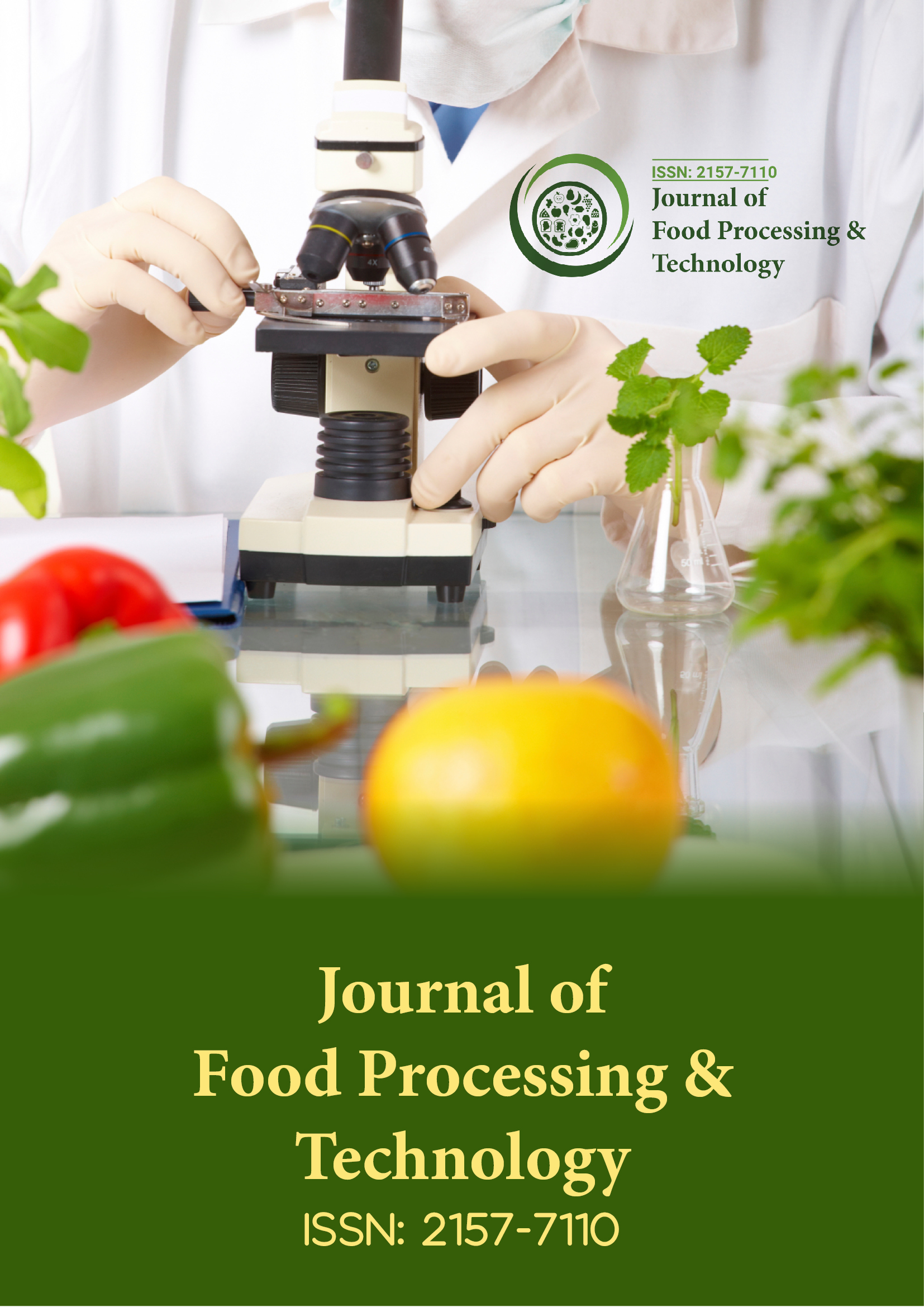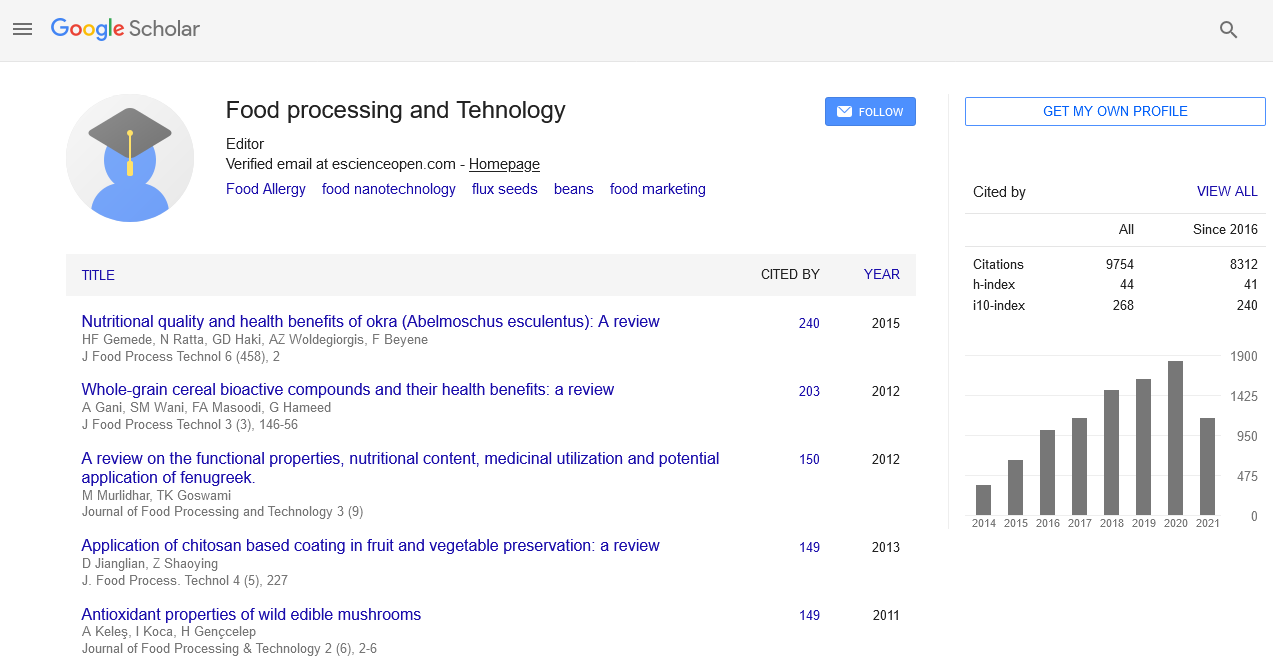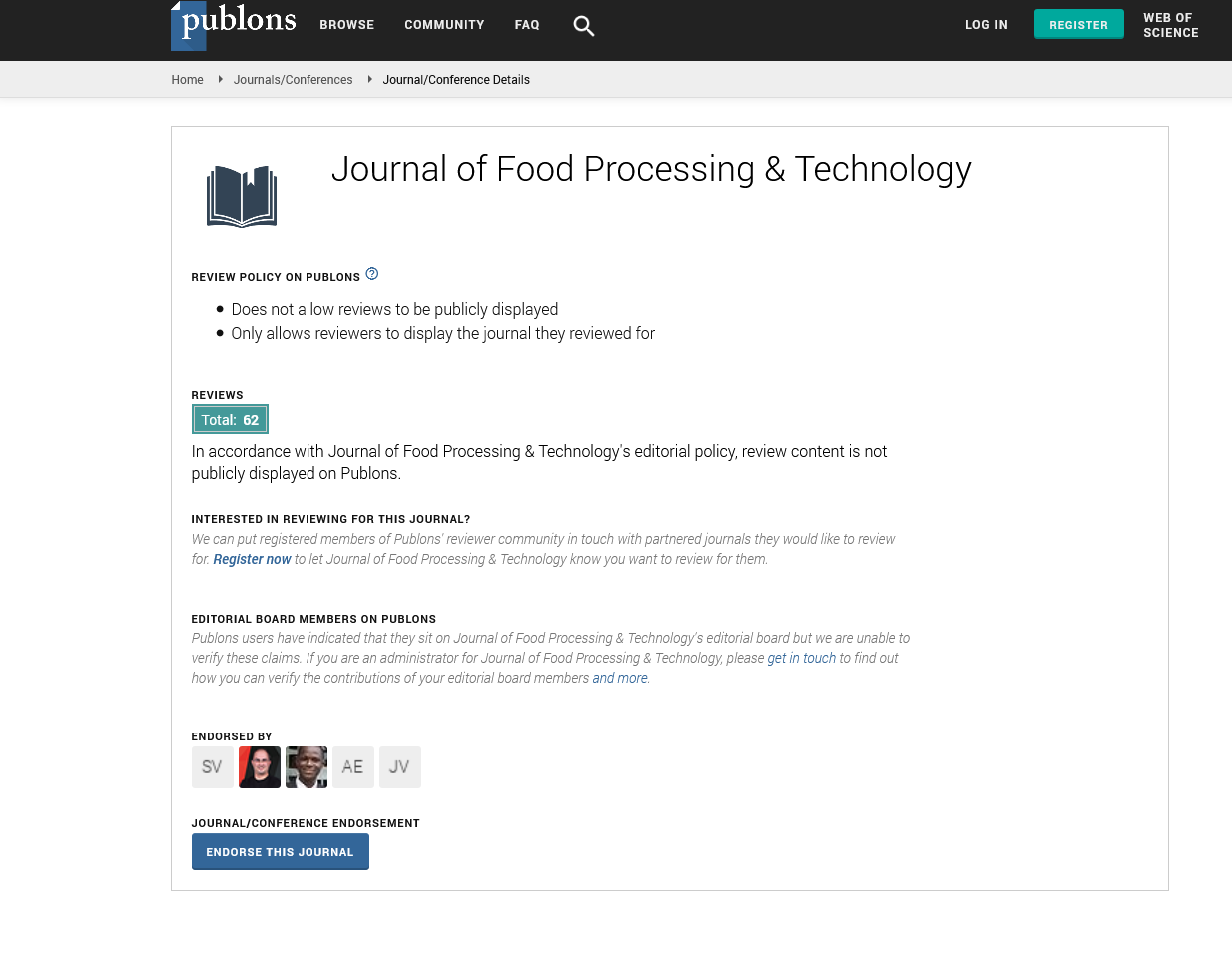Indexed In
- Genamics JournalSeek
- Academic Keys
- JournalTOCs
- China National Knowledge Infrastructure (CNKI)
- Access to Global Online Research in Agriculture (AGORA)
- Centre for Agriculture and Biosciences International (CABI)
- RefSeek
- Directory of Research Journal Indexing (DRJI)
- Hamdard University
- EBSCO A-Z
- OCLC- WorldCat
- Scholarsteer
- SWB online catalog
- Publons
- Euro Pub
- Google Scholar
Useful Links
Share This Page
Journal Flyer

Open Access Journals
- Agri and Aquaculture
- Biochemistry
- Bioinformatics & Systems Biology
- Business & Management
- Chemistry
- Clinical Sciences
- Engineering
- Food & Nutrition
- General Science
- Genetics & Molecular Biology
- Immunology & Microbiology
- Medical Sciences
- Neuroscience & Psychology
- Nursing & Health Care
- Pharmaceutical Sciences
Production of gluten- free products from underutilized millets
T V Hymavathi, Bala Tripurasundari, B Dayakar Rao and S Spandana
Abstract:
Millets are hardy plants capable of growing where most other grain cereals would fail. In developing countries these millets can adequately meet the demand for additional food supply. Absence of gluten in millets has increased its potential in gluten free formulations. The formulation of gluten-free products is usually more challenging than that of gluten-containing products. In addition, the nutritional profile of gluten-free foods may also be a challenge; for example due to their low dietary fiber content. Due to the unique properties of gluten, it is a challenge to develop good quality gluten free products. The diversification of gluten free raw materials used may also necessitate modifications to the traditional production process.The properties of hydrocolloids such as network formation, film formation, thickening and water holding capacity is useful in formulating gluten free formulations. Novel ingredients such as calcium fortified caseinate was found suitable for gluten replacement, where in the properties of gluten which are governed by sulphur-sulphur bonds are replaced by calcium bonds in caseinates, thus making caseinates a potential ingredient to replace gluten in foods. In the formulation of sorghum/pearl millet based products such as pasta, vermicelli and biscuits, calcium caseinate and hydrocolloids such as gum karaya, were successfully used for producing products on par with gluten containing products. These products proved to contain high fibre, and protein in addition to the minerals.


